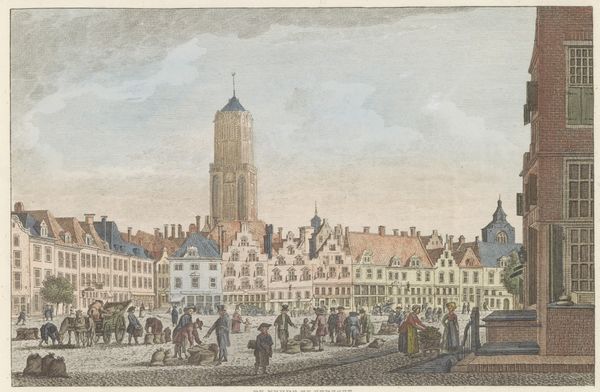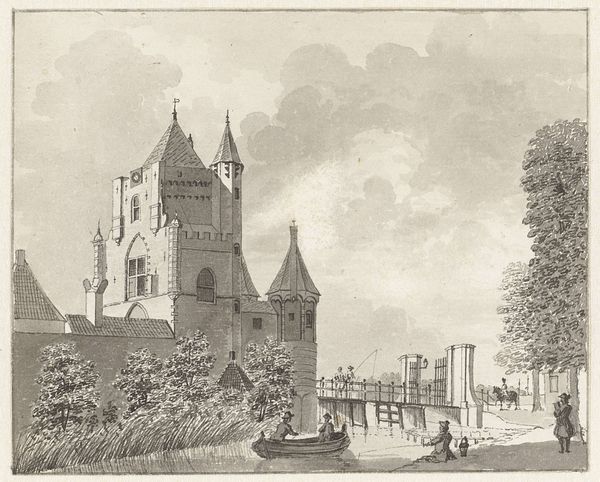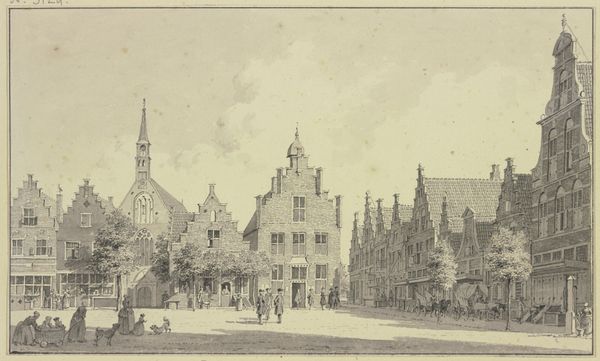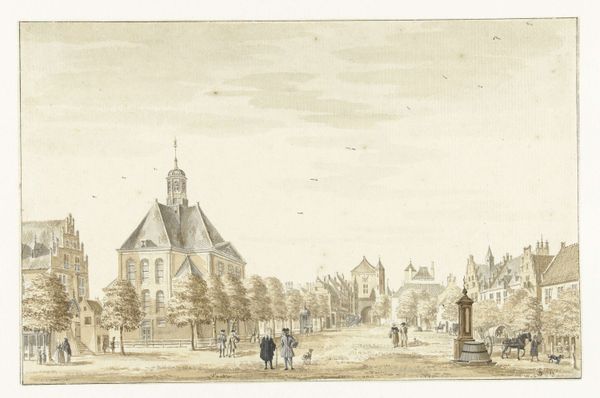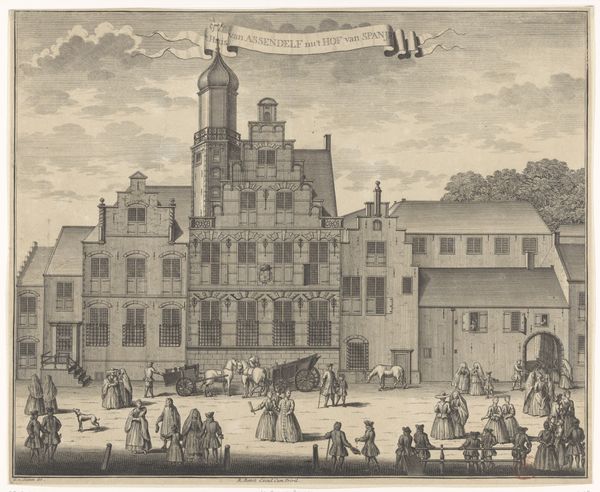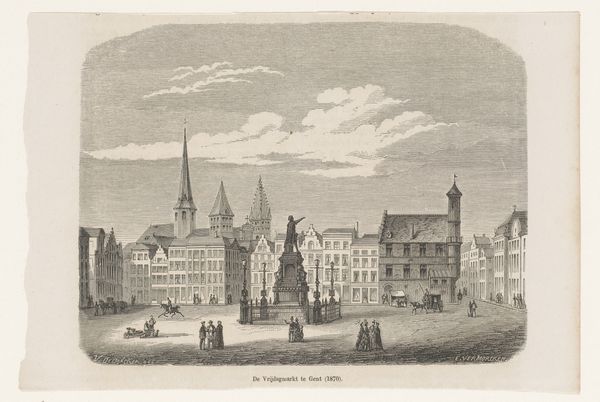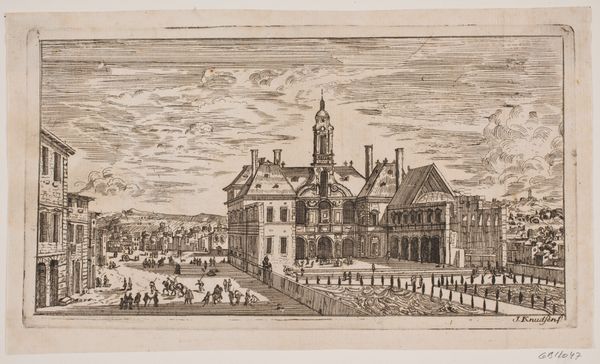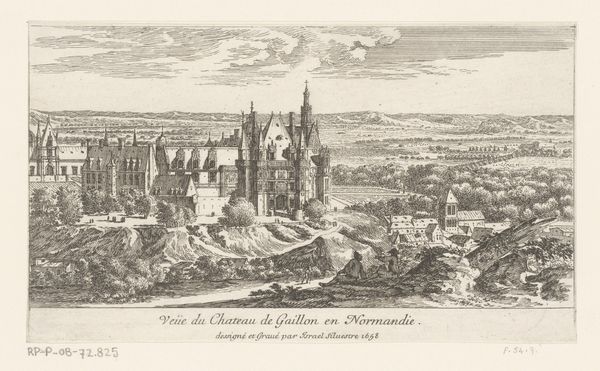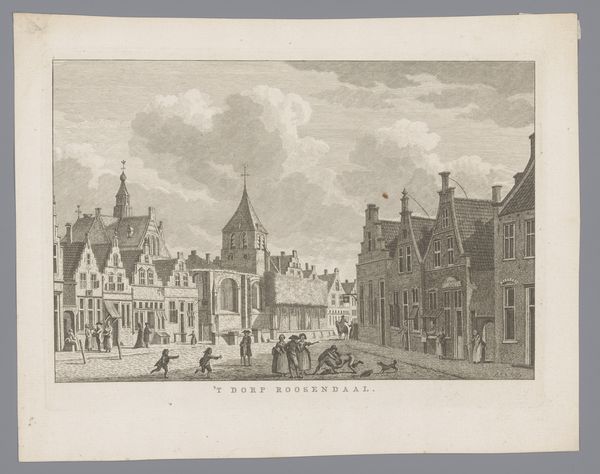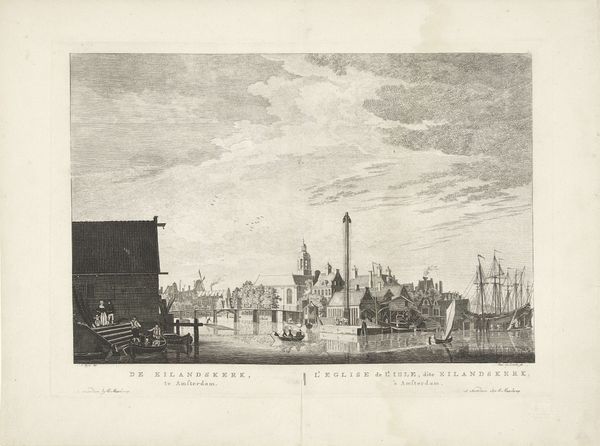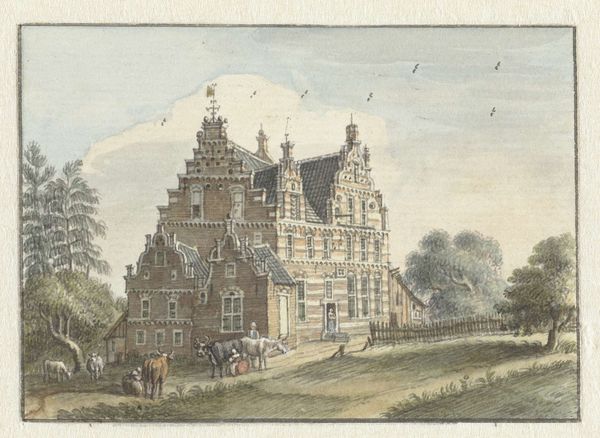
Copyright: Public Domain
Curator: This charming cityscape before us is Peter Becker's "Alsfeld in Upper Hessia," created around 1900. It is currently held at the Städel Museum. Editor: What a picturesque scene. The muted tones create a nostalgic feel, like looking at an old postcard. There is a calmness in the air with only slight movement of the figures travelling by. Curator: Becker worked "en plein air" to capture this view, likely employing watercolor, gouache and colored pencils. These methods are of interest due to their accessibility and relative portability. Such choices situate his practice firmly outside of the then popular and inaccessible oil painting tradition. Editor: Indeed. Consider the historical context: the turn of the century, industrialization rapidly transforming urban spaces. Becker's choice to depict this medieval town—its half-timbered houses, the visible remains of the city walls, the carriages—presents an idealized image of a past resisting modern progression. Curator: There is, however, something slightly uncanny in his materials. Despite their simplicity, or even amateur nature, he is also using mass produced gouache or pencils. How might the proliferation of industrial art supplies inflect a yearning for an artisanal or agrarian past? Editor: I'd also point out how Becker frames the composition. The raised vantage point places the viewer outside and slightly above Alsfeld's community. In this gaze, he suggests a position of both privilege and potential exclusion, as if one is neither quite "of" or totally removed from the depicted social realities of early 20th-century Germany. Curator: Furthermore, if we examine the mark-making, each deliberate choice allows a particular sense of location to solidify into an identity: notice the intricate line work on the facades, and the gentle gradations of colour for shading. Even in artmaking, this requires knowledge. Editor: So while seemingly a simple landscape, this drawing allows a broader reflection about belonging, industrial progress, and artistic license within the complicated context of a rising German Empire. What might the appeal to pre-industrial forms represent within it? Curator: Yes, through close attention to both the materials at play and their possible associations, we can unlock this piece, so much is revealed in its supposed naivete. Editor: Exactly, sometimes the deepest critiques arise in what appears to be the gentlest gestures of homage to traditions, forcing a critical lens onto both Becker's subject and his viewer.
Comments
No comments
Be the first to comment and join the conversation on the ultimate creative platform.
